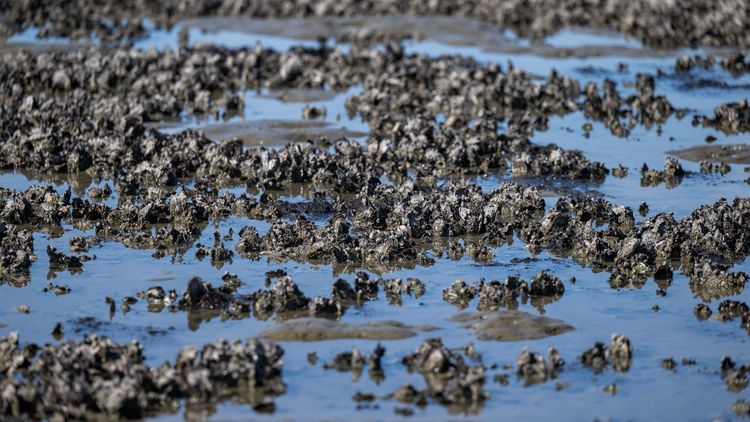Research team from Oldenburg and Groningen analyses biodiversity with a holistic approach for the first time
Biodiversity in the Wadden Sea off the coasts of the Netherlands, Germany and Denmark has changed significantly in recent decades. This is shown by a new study by a German-Dutch research team led by the Universities of Oldenburg and Groningen, which was recently published in the journal Global Change Biology. According to the study, the population sizes of fish that use the Wadden Sea as a nursery, of plants that stabilise the coastline and, since the early 2000s, of birds that use the Wadden Sea as a resting place along their migration route or as a breeding ground have all declined. Other species are benefiting from environmental change and their populations are growing. The results of the study could help to improve strategies for nature conservation and the management of the 500-kilometre-long coastal strip.
In their analysis, the researchers from the two partner universities pursued a new, holistic approach in order to be able to record trends and developments for the entire Wadden Sea ecosystem. "Many studies on biodiversity focus on selected key species as indicators of a change in species diversity," explains Prof Dr Helmut Hillebrand from the University of Oldenburg, one of the lead authors. However, this approach runs the risk of overlooking changes in other species that may also be important for the functioning of an ecosystem. In contrast, other methods that are intended to record the ecological status of entire communities often lack information on exactly which species contribute to changes. "Biodiversity encompasses many facets, such as the level of genetics, the diversity of species within a habitat, between different habitats or points in time, and the diversity of functions in the ecosystem," emphasises Hillebrand. In his view, different methods of measuring biodiversity should be combined in order to map the actual range of changes in biodiversity. "Our analysis adds an aspect to this portfolio that is rarely analysed so systematically: how the number of organisms per species and local site in the Wadden Sea changes over time."
The team, led by Oldenburg marine ecologist Anika Happe and marine biologist Kasper Meijer from the University of Groningen, combined different methods to record temporal trends and systematic changes in this so-called population size. The researchers compiled more than 3,000 time series of population sizes covering many Wadden Sea inhabitants - from birds and fish to plants and soil organisms to plant and animal plankton. The data came from 200 stations along the Wadden Sea coast between Den Helder in the Netherlands and Blåvand in Denmark. The oldest time series began as early as 1900, with many starting in the 1970s and 1980s.
The researchers found that the Wadden Sea ecosystem had undergone a noticeable reorganisation during the period under investigation. There were only a few populations whose size remained unchanged. The losers of the change - i.e. species with declining populations - were primarily fish, including Atlantic cod and various species of flatfish. The trend was also downwards for many mussels, snails and bristle worms, as well as for plant plankton and plants, such as seagrass or the vegetation of salt marshes. This means that important primary producers of the ecosystem are among the losers. The winners, on the other hand, included newcomers to the mudflats such as the Pacific oyster and the American razor clam.
In the case of seabirds, the data showed an increase in population sizes for the majority of species over a long period of time. However, this generally positive trend reversed from the late 1990s and early 2000s for many waders and gulls: Their numbers have been declining ever since. "Our method could therefore help to identify local threats to individual species at an early stage," emphasises first author Happe.
The team identified further interesting details in the data: the species whose populations declined were not randomly distributed across the tree of life: Negative trends often occurred in related species. The researchers attribute this to the fact that these species have similar survival strategies and could therefore suffer together from changing environmental conditions. In addition, the trends were often synchronised in time - in the affected seabirds, for example, the reversal from growing to declining populations occurred more or less simultaneously. This also points to common causes, says marine ecologist Prof Dr Britas Klemens Eriksson from the University of Groningen. "In follow-up studies, we want to investigate the specific causes of these dramatic changes," he explains. The new, holistic approach offers the opportunity to analyse changes in food webs, for example, and to establish quantitative links between environmental pollution and biological changes.
Original article: Anika Happe, Kasper Meijer et al: "Synthesis of Population Trends Reveals Seascape-Wide Reorganisation of Biodiversity From Microalgae to Birds", Global Change Biology, doi.org/10.1111/gcb.70298

![[Translate to English:]](/f/5/_processed_/3/2/csm_ICBM-Logo-transparent-_91fe1c6774.png)
